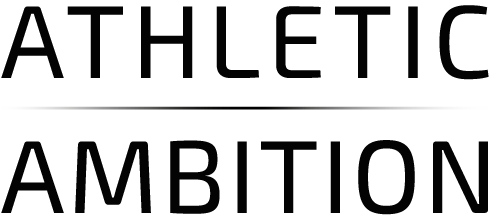Many people are dehydrated. I have many clients that say they don’t drink much during the day and then they turn up to train and wonder why they feel tired and sluggish. Here are some pointers of when and how much water, you should drink if you are going to be exercising.
Water makes up around 45% – 70% of our total body weight (2) Organs, all tissue and all bodily fluid contain water as water is an essential constituent. Very little water is stored in the bones, teeth and hair (3).
Under normal conditions, such as a temperate climate, fluid balance is regulated by thirst sensations and by regulation of loss by the kidneys. Loss of water through urination, sweat, respiration and feces determines the amount of water required by the body. The total water intake for young men and women (ages 19 – 30) is 3.7L and 2.7L/day, respectively (6).
The risk of dehydration can be a real factor during exercise, which, unless sweat losses are replaced, the temperature of the body will go up, which can lead to heat exhaustion, heat stroke and even death. We can track sweat loss through changes in our weight. A total body weight loss of 1% can elevate our core temperature. A 3% – 5% loss of fluid in body weight can affect our cardiovascular system and impair our ability to dissipate heat. A 7% loss of fluid in body weight can result in collapse (2).
We can monitor our fluid loss during exercise by weighing ourselves before and after exercise. Remove sweaty clothes for accuracy. Every 0.45kg or 1lb lost during exercise is the equivalent of 1 pint (2). This must be replaced before the next workout. Other indicators of dehydration can be dark yellow, strong smelling urine, a decreased frequency of urination, a rapid resting heart rate and muscle soreness last many days (1).
Fluid Replacement
Replacing fluid occurs at three general times. We want to start exercising in a hydrated state so we consume fluid before we start and to avoid dehydration, continue during exercise and replace fluid loss after the exercise session has finished.
Before Exercise
You want to consume 1 pint (500 ml) of fluid 2 hours before the exercise session starts. This allows us to be hydrated and allows for urination before the exercise session starts (2). The fluid can come in any form, water, juice, milk etc and can be consumed with a meal.
During Exercise
When consuming fluid during exercise, the aim is to get fluid into circulation to match the speed that the body is getting rid of fluid through sweat. This can be achieved by taking in fluids that are fast absorbing e.g. water. The drink also wants to be palatable. Fluid should be consumed before feeling thirsty. If the stomach can take it, it is better to take in large amounts of water, rather than sip, as large volumes empty from the stomach quicker than small volumes (2).
A variety of fluids can be consumed during exercise (4). Cool water is the ideal, although if water is unpalatable, then adding flavoring to it can be done, which means you can drink more (2). Aside from fluid intake, there has been no evidence to support that there is a physiological benefit of drinking a carbohydrate drink during exercise, if the exercise is less than 1 hour long. For Most people working out, cool water will be ideal, although you could add some sugar free flavoring if you don’t like the taste of plain water.
Water should be consumed frequently, with around 200 ml – 250 ml consumed every 15 minutes of exercise (2).
After Exercise
The goal after the training session is to get the body ready for the next workout. As mentioned above, weighing yourself before and after can allow you to monitor fluid loss and indicate how much fluid to take in after the exercise session has finished.
If large amounts of fluid has been lost through sweating, sodium chloride (salt) levels may be low and so drinking fluid or eating food containing sodium chloride, minimizes urine output and speeds up recovery of water and electrolyte balance (5).
Most fluid intake occurs when consuming food, with water coming from both food and beverages. Drink plenty of water during the day aiming for 3 – 4 L a day and adding an extra 1 L – 1.5 L to account for fluid loss on days that you are exercising.
For more information on nutrition and tailored nutrition, contact harry@athletic-ambition.com.
Harry Grove BSc CSCS
Harry is a strength and conditioning coach and personal trainer. He has been in the health and fitness industry since 2000 and has trained 1000’s of clients, ranging from your everyday gym goers to professional athletes. Harry has competed as an international level powerlifter.
References
Armstrong, L.W., Maresh, C.M., Castellani, J.W., Bergeron, M.F., Kenefick, R.W., LaGasse, K.E., and Riebe, D. Urinary indices of hydration status. International Journal of Sports Nutrition 4:265-279. 1994.
Beachle, T.R., and Earle, R.W. Essentials of Strength and Conditioning, 3rd ed. Champaign, IL: Human Kinetics. 2008
Fox, B.A., and Cameron, A.G., Food Science, Nutrition and Health. 5th ed. London, UK: Arnold. 1995
Horswill, C.A. Effective Fluid Replacement. International Journal of Sports Nutrition 8:175-195. 1998.
Maughan, R.J., Leiper, J.B., and Shirreffs, S.M. Restoration of Fluid Balance after Exercise-Induced Dehydration. European Journal of Applied Physiology. 73:317-325. 1996
National Academy of Sciences Institute of Medicine. Dietary Reference Intakes Set. Washington, DC: National Academy Press. 1997 – 2004


Recent Comments